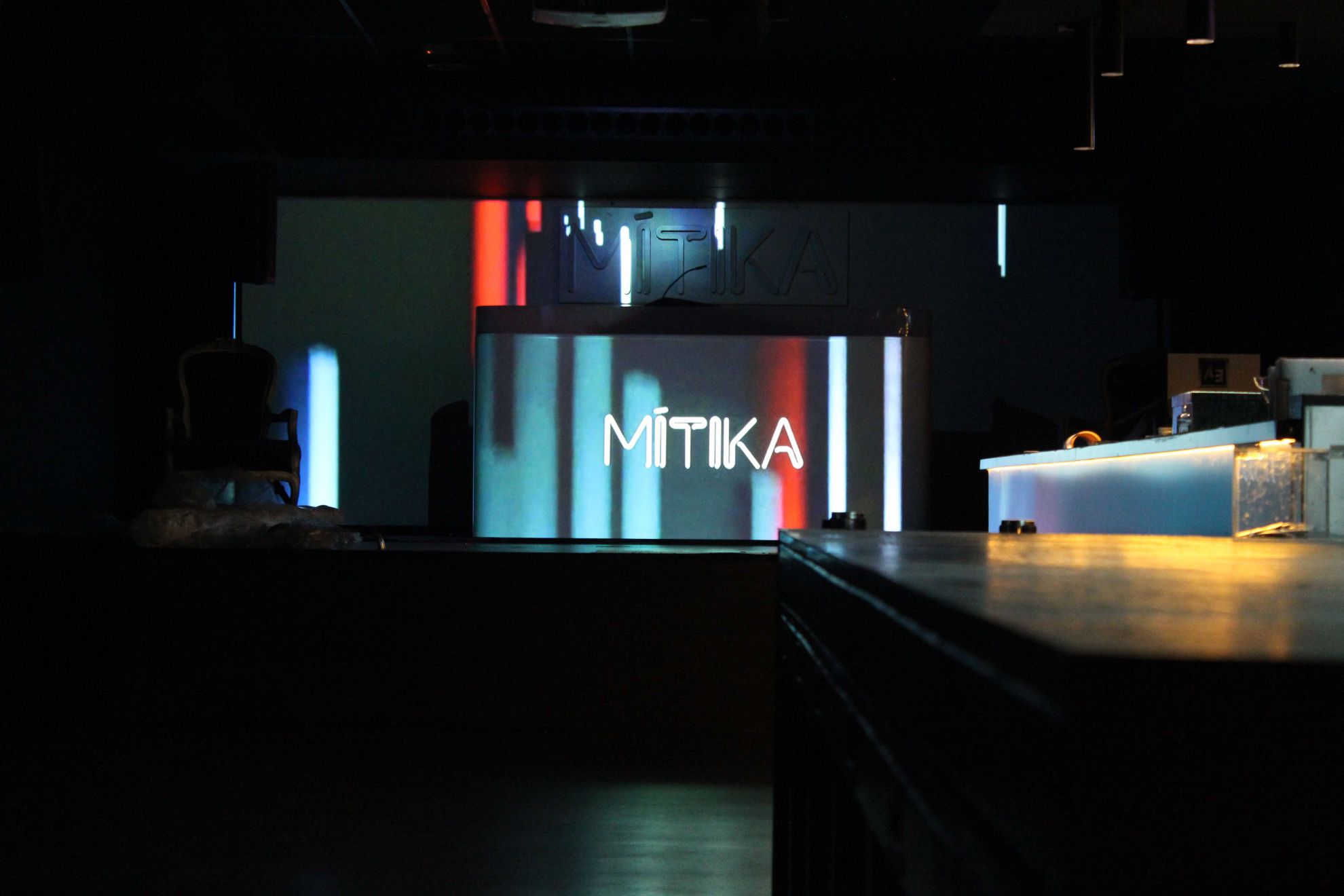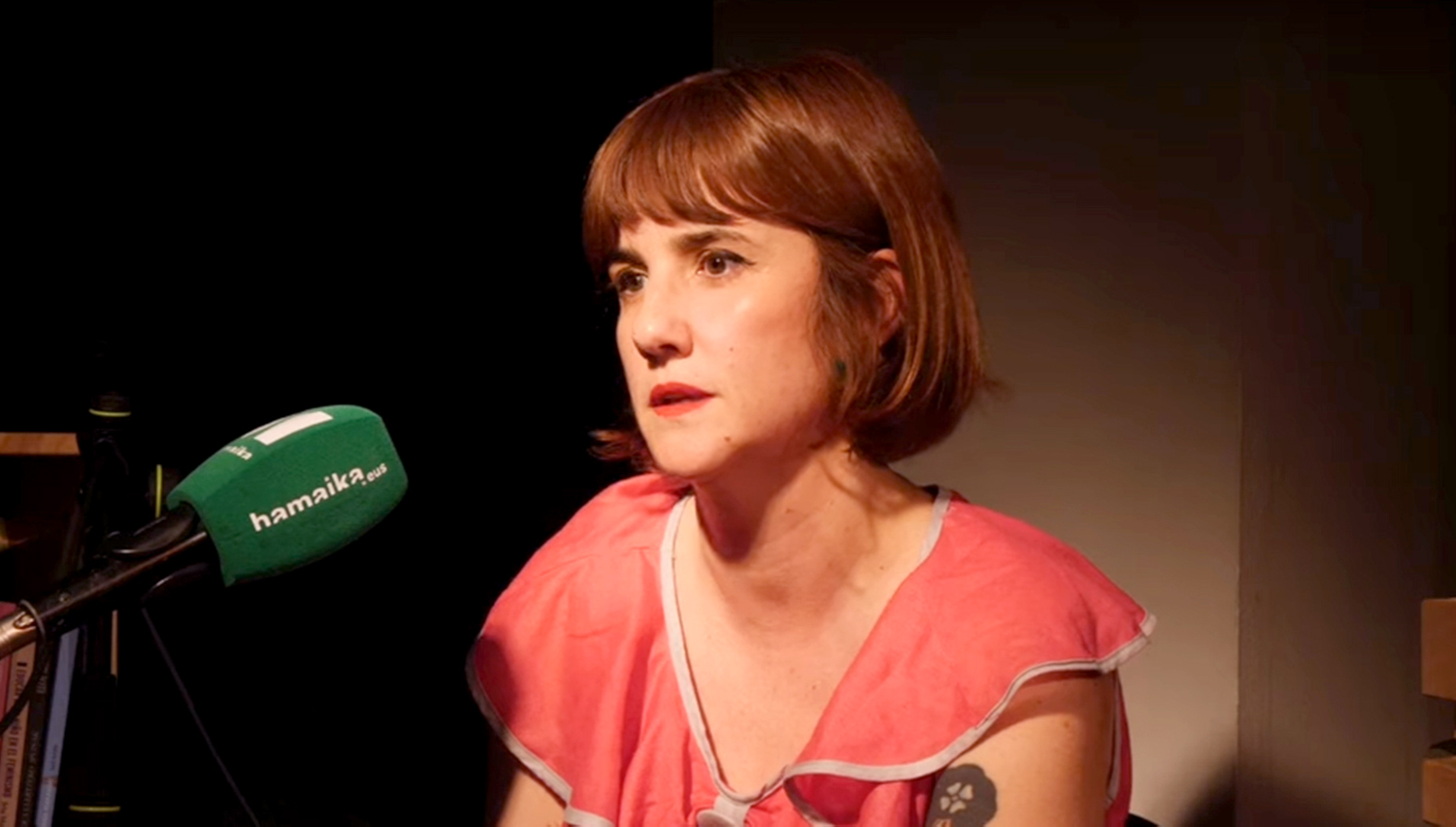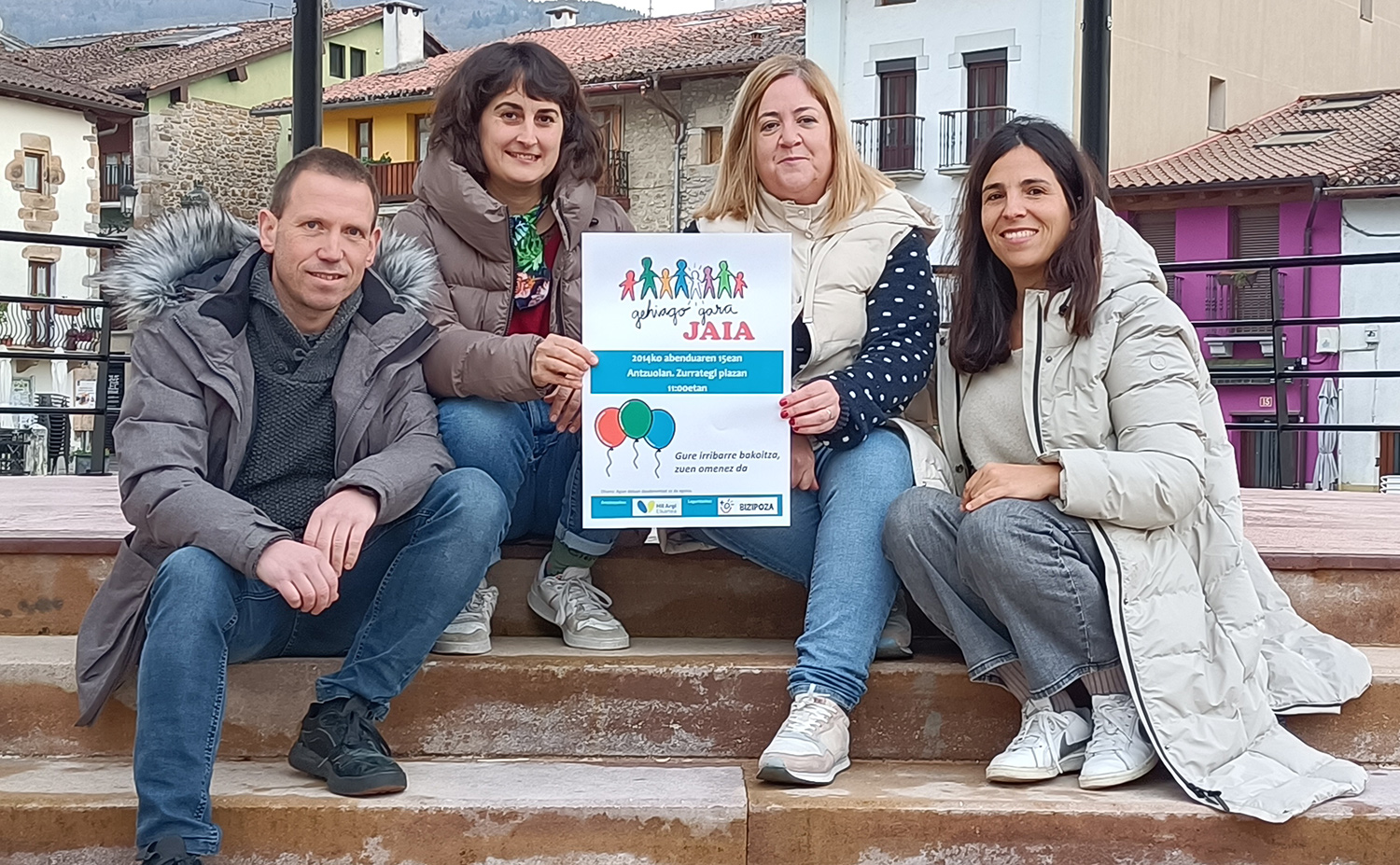How and for whom should it be a 30-year cemetery?
- In Antzuola (Gipuzkoa), there has been a participatory reflection on this great question, and contributions from citizens who have participated in the open programmes have recently been presented. The objectives have been, on the one hand, to overcome fears and ignorance about death and to talk about it as naturally as possible. On the other hand, draw up and make available to the City Hall the list of proposals for the execution of works in the cemetery.

We often associate cemeteries with horror films. Four gray walls with eleven gray pits, metal doors and metal crossings. We will also see flowers that give a little color to the surroundings, but also the corners that have been taken by the braces. No, in general they don't make us feel comfortable. Furthermore, more and more people are deciding to incinerate their bodies and spread their ashes by the sea or by the mountain. Thus, municipal cemeteries must regain their “function”, “responding to the changes that occur in society and offering a quality service”. Nere Erkiaga, from Lekeitio, has tanatology studies and is a member of the Hil Arte Bizi project, which has driven the process taking place in Antzuola. “Today’s society hides death, we have a pathological fear and we live it as something personal,” he tells us, when it also has a notable influence on the collective. “We have many deficiencies around death, starting at the base,” he says, referring to the consequences of his silencing. It tells us about many issues that affect us beyond the cemetery, like the changes that we can drive forward as political subjects. “To empower us in issues related to death, as citizenship and as a community, it is essential to work in all areas, be they nursing homes, health centers, municipalities, neighborhoods or educational centers.”
It is pointless for us to hide in silence. Moreover, according to Erkiaga, “ignorance generates many inhumane situations, barbarities are made, they are not shown...”. After talking a lot about pediatric palliative care or the reality of hospitals, he told us that knowing the legislation is fundamental, knowing what rights we have, to be able to make decisions on our own, because we can do more than we think. Municipalities, for example, have many competencies related to death, but we know little about them. For example, although some cemeteries belong to the Church or are private, most are in the hands of municipalities, which are public, even for what is called "cemetery". The process of reflection that has been carried out in Antzuola aims to influence this, making available to the City Hall a long list of ideas so that it can serve as a basis if it decides to launch a project related to the cemetery. The need is that cemeteries have not developed and adapted over time as other public services, they have remained similar for more than a hundred years, although society is constantly changing.

Who owns cemeteries? Who of the tanatories? What do they look like? Where are they located? Who cares for them? What are pantheons like? How are mouthpieces for ashes? Is there any dignified place in the cemetery to greet the dead? What about the Tanatorium? And in public space, to do civil acts? Are there municipal employees who have been trained on the subject, who are going to help their relatives, who want to organize anything? How have funeral companies evolved? What are the services and rates they offer? As of January 2023, citizenship has held a dialogue around eleven and one questions. They conclude that the cemetery has two functions. On the one hand, practical as a space for cadavers, remains and ashes. On the other hand, symbolic, because in it they remember and honor those we love. Whether or not we believe in gods, skies, rebirth, spirits or whatever, but when someone dies, the feeling of love will always be in the midst of turbulent emotion.
Hide the reality
This symbolic function has great force among children. They have been some of the main protagonists of the reflection process, in line with the work being carried out in the Herri Eskola on death since the 1980s. About two years ago, for example, when children three or four years old learned about birth, the issue of death arose – children told close experiences – and later a mother talked about perinatal death – children who die in pregnancy or in the newborn. “In school death is very present, it is part of life, they go hand in hand, anyone can pass at any time,” says Professor Josune Jiménez. The issue has been addressed “naturally” in Antzuola, working in class the experiences of the children in their own meats: the death of the grandmother, the uncle, the dog at home or the fish they have at school.
In December last year, the Antzuola Public School received recognition of the More Gara initiative “for having worked on the pedagogy of grief and death for several years”. Created by the Hil Argi and Bizipoza associations, the project aims that the death and death of children live “naturally and humanely”. “It’s hard to talk about our own experiences or the death of the person we love the most,” said Herri Eskola’s director, Silvia Ezpeleta, when they received recognition from Gehiago Gara. In addition, many teachers are not prepared to work on the subject, and some prefer to hide the reality. In Ezpeleta’s words, when reality is hidden, children and young people are not allowed to “make their own life more conscious and human”. That is, “we close the doors to expressing and working on questions, concerns and fears”.
The report therefore covers young people between the ages of 12 and 13, as well as children between the ages of 3 and 4, who will work on cemeteries.
“The cemetery is very gray”
One day the children went to the cemetery and when they returned to school they said, among other things, that it was gray, dirty (plastic bags and flowers on the ground, broken crystals..) and that inside a broken door the bones were seen. And it needs more colors, lots of trees, nicer drawings on the walls, music, a great heart at the main entrance -- because the dead are in the heart -- tables and chairs to eat pastries, animal tombs, a nice place for ashes, etc. In the presentation of the report, Erkiaga said that the cemetery needs a pool and that, apparently, the children of Antzuola have been asking for the pool for some time, Erkiaga explained in laughter.
The public has insisted that the City Hall should be aware of the public service and that it must face the risk of privatisation.
Young people aged 12-13 think that the graveyard is not nice; when asked why, they have mentioned the “fear of death” and some have talked about spirits. According to them it also needs more color, more clarity, music... And there is a person there who takes care of the graveyard and the graves, who will clean and fix the graves, put the flowers well arranged, remove the weeds... Precisely, the women of the church who have participated in the process of reflection have also brought up the theme of care: “Who will take care of the dead? If no one goes after them to the cemetery, why be there?”
Tackling privatization
The report contains a large number of ideas proposed by adults. Among them: the cemetery must be a place for all citizens, regardless of its origin, ideology, belief/religion or class; the city council must be aware of the public service and face the risk of privatization; in addition, it must take into account the maintenance expenses; it must be a natural space or a park to be able to move between the graves; have a more neutral aesthetic, not to detect who is richer and who is poorer with this competition;

“When the farewell is run by a company or someone else, it can be very cold and privacy is lost,” we can read in the report. Five people participated in the presentation: Nere Erkiaga, Professor Josune Jiménez, the mayor of Antzuola Olatz Lezeta, Andere Ormazabal, member of the research group Part Hartuz of the UPV/EHU that has invigorated the process, and the mayor of Oiartzun, Joana Mendiburu, spoke about the experience of the veliness. In Ormazabal’s words, “market logic has also prevailed in this area, and processes such as Antzuola’s are important to face the privatization trend, to raise awareness and mobilize the city council and citizens as political subjects.”
In the process of reflection it has been seen that municipalities should give an answer. “We will have to look at what can be done in the short and long term, because we haven’t given it many laps,” says Antzuola Mayor Olatz Lezeta: “Death touches us all, whether we like it or not, it will reach us all. The cemetery must be within reach of all, in case it is from the Church; we all have to be comfortable in it, both the dead and the living.”
--------------------------------------------
Public tanning by Oiartzun
Guaranteeing the publicity of the services related to death has been one of the many petitions of the citizens of Antzuola, and within it, creating public and free use tanatories or velatoria, so that they are not devoured by the large companies that offer funeral services. Thus, the presentation of the reflection process was attended by the Mayor of Oiartzun, Joana Mendiburu, who spoke about the public tanatorium in which she has reached thirteen years.
Market studies say that within a time the majority of the population will not make candles, largely because of the behaviour of the companies providing the service. “If we do not want to enter the logic of the market, if we do not want to be faithful to the game of big business, the municipalities will have to intervene and create free-to-use evenings, for example,” says Mendiburu. Oiartzun was “small and dark” until it became new in 2011. At that time both companies undertook to get the service, but finally the City Council decided to assume it. Operation is simple. Citizens who want to use the tanatorium call the Municipal Police – any day and time – take the keys and decide the opening hours – up to 48 hours. The use of the tanatory for two days costs 170 euros, cheap for when we are accustomed. “It’s a nice place to fire people, in the surrounding countryside and at the height of the Peñas de Aia.” The location is of great beauty when compared to the soulless gray pavilions in industrial sites.
“Death has been a pendulum in the evolution of society,” said Nere Erkiaga in an interview published by Goierriko Hitza (28-06-2024). “In the past, the Church controlled the issue and created enormous fear. We have now moved to the other end. Hardly mentioned, and we have brought death to industrial sites; we have become incapable.”
Soco Lizarraga mediku eta Nafarroako Duintasunez Hiltzeko Eskubidea elkarteko kidearen ustez bizi testamentuak heriotza duin bat eskaini eta familiari gauzak errazten dizkio.
Gertakariak igande egunsentian suertatu dira 5:00ak aldera Gasteizeko Mitika diskotekan. Hildako pertsona 31 urteko gizon bat da, eta lurraren kontra buruarekin hartutako kolpe baten ondorioz hil da, antza atezainak kolpe bat eman ostean.
These were my last words when we left, held hand in your deep breathing sleep. Your heart stayed forever without a special, simple, dignified pain. As you want and demand. How we want and respect.
Already a month before the arrival of winter, the last days of the longest night,... [+]
First of all, we wish to extend our condolences to the family and friends of the woman killed in early August.
The people of Gaintxurizketa are fed up with the disillusionment of the administration and those responsible.
Those of us who live in the neighborhood are forced to... [+]
Paris 1845. The Labortan economist and politician Frédéric Bastiat (1801-1850) wrote the satire Pétition des fabricants de chandelles (The Request of the Sailing). Fiercely opposed to protectionism, he ironistically stated that the sailing boats asked for protection against... [+]
(Azken aldi luzean ezin naiz gauez atera, eta arratsaldez ere larri, eta asteburuetan ere ez, eta (jarri zaizue jada ihes egiteko gogoa), marianitoak eta bazkari azkar samarrak izaten dira nire enkontruneak. Konpainiak ondoegi aukeratu behar ditut. Ezin ditut poteoak... [+]













.jpg)








